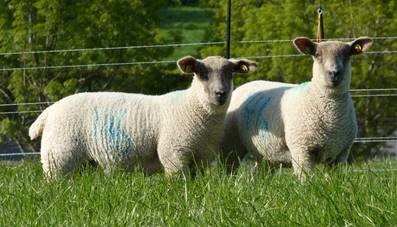In this article, CAFRE beef and sheep adviser, Gareth Beacom, Enniskillen, discusses maximising the potential from grass and alternative forages.
The Agrisearch grass to lamb project demonstrates that there is significant room for improvement in terms of grass grown and used on sheep farms in Northern Ireland.
The project concluded that a well-managed grass system has the potential to supply 90-95% of a sheep flock’s nutritional requirements.
The project demonstrated lamb growth rates, drafting patterns and carcass data from both a 4-paddock system and an 8-paddock system.
It reported an “excellent” grass utilisation rate of 78% on average from the two systems.
Across both systems, 100% of the lambs were finished by the end of November. They had an average carcass weight of 20.2kg and the average age at slaughter was 27 weeks.
The recent fertiliser planning report AFBI published highlighted the months from May – July is when farmers can get the best response and value for money from sowing fertiliser.
In general, it is also when a lot of grass is wasted on sheep and beef farms if you do not keep grazing under control.
Farmers who have adopted a paddock or rotational grazing system often state the ability to close off paddocks. They take these out for high-quality silage as a massive benefit to the system.
Baling this surplus grass can help boost the fodder supply for the wintertime, which could be particularly useful this year.
Alternative forages
If reseeding is needed, then incorporating a forage crop such as rape or tyfon can give another option for finishing lambs in the summer months.
These can be sown either on their own or undersown along with a grass reseed to provide a cost-effective alternative for finishing lambs.
While growth rates will not be significantly higher than you would expect from high quality grazing, forage crops are generally dense in nutrients, with the leaves high in protein and the roots high in energy.
If you achieve a good establishment, then a high dry matter yield per ha is possible. This will allow you to finish many lambs on a small area.
Considering the dramatic increase in all costs, planning for this year’s lamb crop is vital to finish lambs cost-effectively. It is also essential to have sufficient grazing and silage supplies for ewes later on in the year.
Everyone’s situation will differ depending on stocking density and dependency on inputs. Larger producers can minimise risk by availing of several finishing options.
Other articles on That’s Farming:





